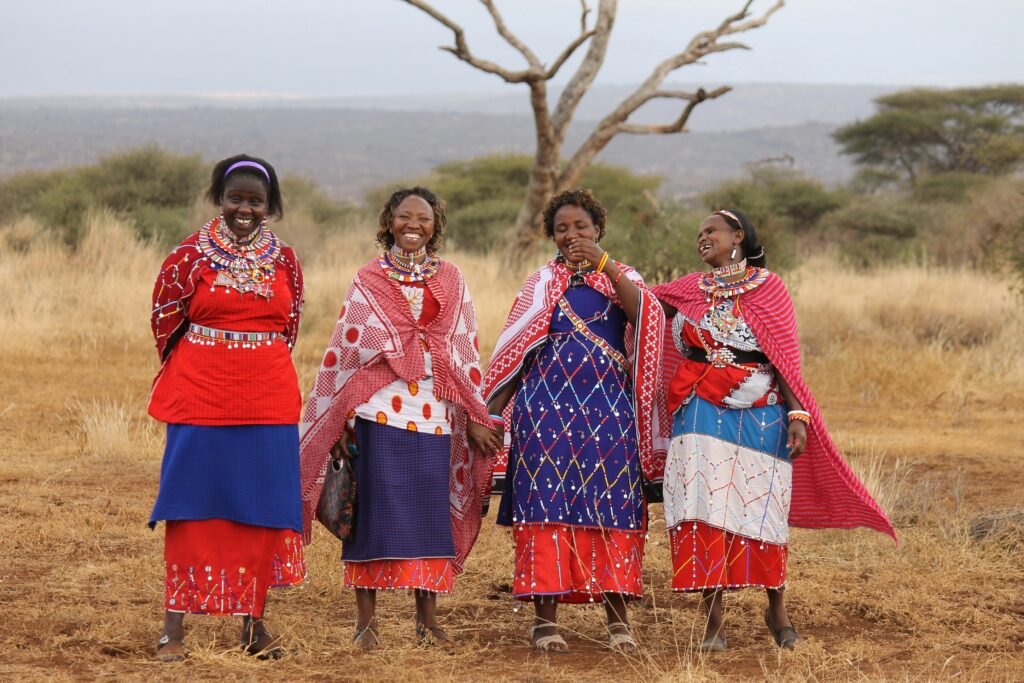
Photo by Sneha Cecil on Unsplash
The Maasais: Guardians of Nature and Tradition
greensafariguide.com
Introduction
The Maasai are a semi-nomadic indigenous community found predominantly in southern Kenya and northern Tanzania in East Africa. They are well-known for their vibrant culture, distinctive dress, and strong connection to nature. Historically, the Maasai have lived as pastoralists, moving with their cattle across the vast savannahs of East Africa in search of grazing land and water. With an estimated population of around 1 million, the Maasai have maintained their traditions despite pressures from modernization and changes in land use.

Photo by Sneha Cecil on Unsplash
Cultural Practices & Traditions
The Maasai culture is deeply rooted in their pastoral way of life, which revolves around cattle. They believe cattle are a gift from their god, Enkai, and consider themselves the custodians of all cattle on Earth.
Rituals and Ceremonies: Key cultural events include the Eunoto ceremony, which marks the transition of young men into warrior status, and Enkipaata, the coming-of-age ceremony for boys. Maasai rituals often involve blessings with cattle milk and blood, symbolizing their connection to both life and sustenance.
Art, Music, and Dance: The Maasai are known for their distinct art forms, such as beadwork that adorns their bodies and traditional clothing. The beaded jewelry reflects social status, age, and even personal milestones. Traditional dance, especially the jumping dance (Adumu), is a hallmark of Maasai culture, performed during celebrations and gatherings.
Traditional Clothing and Jewelry: The iconic Maasai shúkà, a brightly colored cloth often in red, is worn by both men and women. Their elaborate beaded necklaces, bracelets, and earrings are not only decorative but hold cultural significance, representing various aspects of identity, from marital status to clan affiliations.

Photo by Susan Kirsch on Unsplash
Connection to Nature
The Maasai have long lived in harmony with the environment, relying on traditional ecological knowledge to sustain themselves while minimizing environmental impact.
Sustainable Practices: One of the Maasai’s most notable sustainable practices is their rotational grazing system. By moving their cattle across vast tracts of land, they prevent overgrazing and allow the land to recover. This nomadic approach has played a critical role in maintaining the ecological balance in the savannah regions they inhabit.
Sacred Sites and Landmarks: The Maasai view certain natural features, such as Mount Kilimanjaro and the Ngorongoro Crater, as sacred. These landscapes are not only important spiritually but also provide essential resources like water and grazing lands.
Environmental Stewardship: The Maasai see themselves as stewards of the land, coexisting with wildlife in some of Africa’s most famous conservation areas, including the Maasai Mara and Serengeti. Their deep respect for animals, particularly lions, has even inspired cultural rituals, such as the lion hunt (now discouraged in favor of conservation).
Cultural Preservation & Conservation Efforts
As the Maasai face increased pressure from land privatization, climate change, and tourism, there have been significant efforts to preserve both their culture and the environment.
Threats to Cultural Heritage: Land rights are a major challenge for the Maasai. The establishment of national parks and private conservancies has restricted their traditional grazing routes, pushing them into smaller, less fertile areas. Additionally, modernization and external influences are slowly eroding some of their cultural traditions.
Conservation Initiatives: Maasai-run conservancies are gaining prominence, where Maasai communities manage conservation areas and benefit from eco-tourism. These initiatives allow the Maasai to continue their traditional lifestyle while also protecting wildlife and preserving their lands.
Education and Advocacy: Organizations such as the Maasai Wilderness Conservation Trust work with Maasai communities to promote environmental education and advocate for land rights. These programs encourage the younger generation to embrace their heritage while engaging in modern conservation techniques.

Photo by Imani Manyara on Unsplash
Eco-Tourism & Sustainable Initiative
In recent years, the Maasai have embraced eco-tourism as a way to preserve their land and cultural heritage while generating income for their communities.
Community-based Tourism: Maasai villages often welcome visitors for authentic cultural experiences, including guided tours of their homes (Manyattas), storytelling sessions about their customs, and traditional dance performances. This interaction allows tourists to gain a deeper understanding of Maasai culture and the importance of conserving their environment.
Eco-Friendly Activities: Visitors can participate in Maasai-led safaris, where they can witness the region’s iconic wildlife, such as elephants, lions, and giraffes, in their natural habitat. These eco-friendly activities ensure minimal disruption to the ecosystem and promote sustainable tourism practices.
Economic Benefits of Eco-Tourism: Eco-tourism provides Maasai communities with alternative livelihoods, reducing their reliance on cattle in areas affected by drought and land pressure. The income generated from tourism helps fund community projects, including schools, healthcare, and conservation initiatives.
Success Stories: The Olare Motorogi Conservancy, run in collaboration with the Maasai, is a prime example of successful community-based conservation. The conservancy has not only protected wildlife but also created jobs for Maasai warriors as wildlife rangers, further integrating conservation with cultural preservation.
Future Outlook
The Maasai community faces significant challenges as they navigate the delicate balance between maintaining their cultural heritage and adapting to a rapidly changing world.
Challenges and Opportunities: The encroachment of modern infrastructure, the impact of climate change, and land tenure conflicts pose ongoing threats. However, there are opportunities for the Maasai to leverage their role as stewards of the land through eco-tourism and conservation partnerships.
Vision for the Future: The Maasai envision a future where their culture is not only preserved but celebrated globally. By continuing to adapt their traditional practices to the modern world while playing a key role in environmental conservation, the Maasai will remain at the forefront of sustainable living in East Africa.

